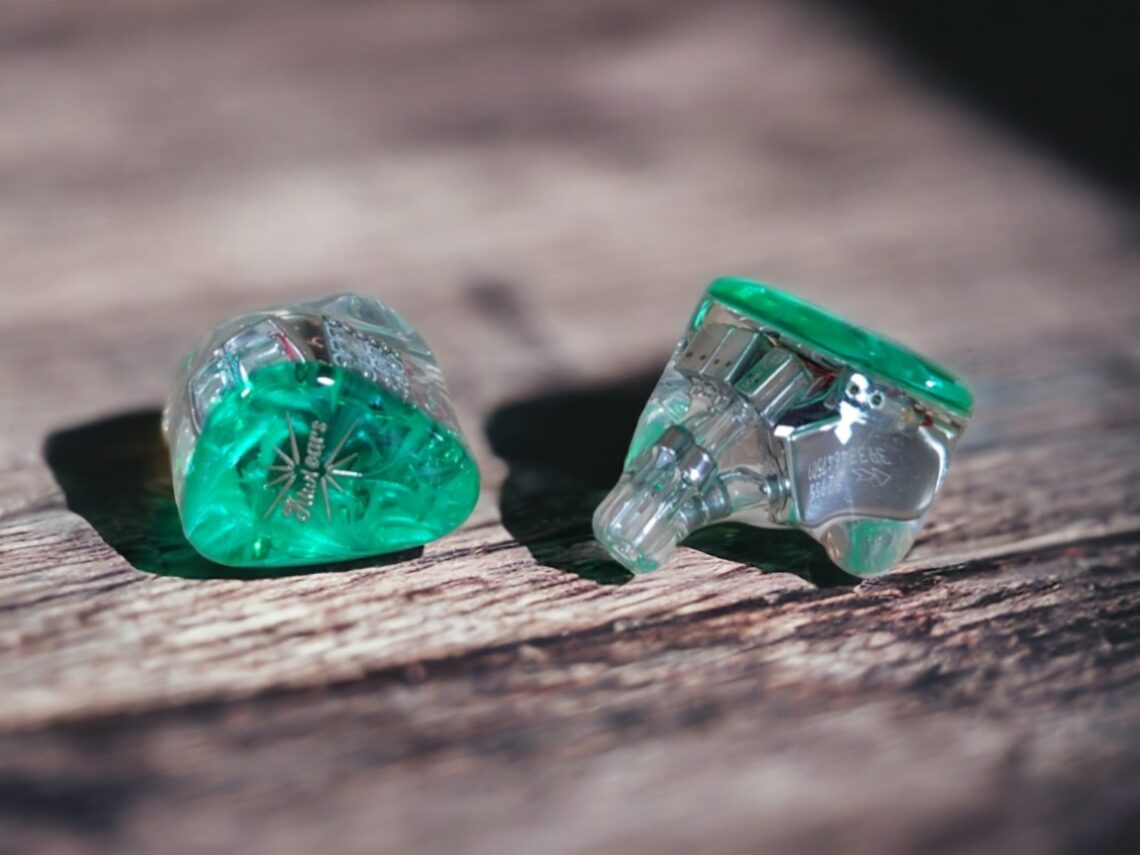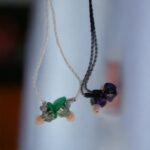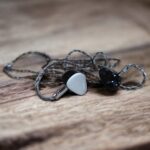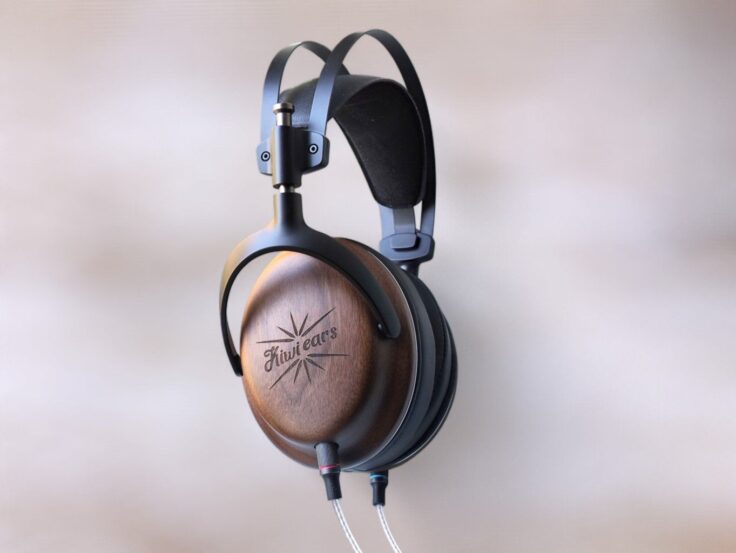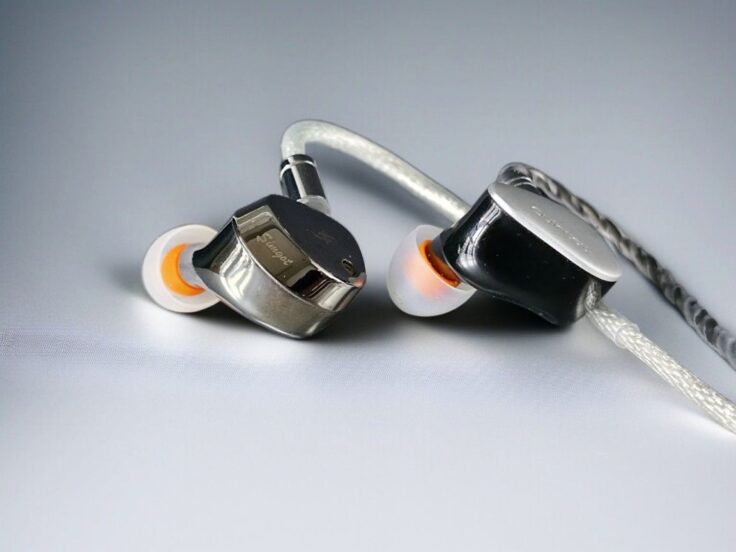The Kiwi Ears Orchestra Lite features 8 custom balanced armature drivers: Two ultra tweeters for the treble, four midrange balanced armature drivers for the mids, and two subwoofer drivers for the lows. The Orchestra Lite utilizes a three-way passive crossover.
The Orchestra Lite is based on the original Kiwi Ears Orchestra, but redesigned to be more efficient, both in performance and cost. The Orchestra Lite features the same 8-balanced armature driver configurations and tonal balance as its predecessor but with some modifications. According to Kiwi Ears, the balanced armature drivers in the Lite deliver a more efficient performance at the same specs compared to the original.
The Orchestra Lite is, as the Orchestra, designed to have a natural and balanced tonal signature: “The bass has been restricted to sub-bass frequencies, with a peak of 8dB volume from 20Hz to 200Hz. The mids region is retained at neutral, with only a 1dB difference from 200Hz to 800Hz. The treble has been perfectly matched with the human ear’s pinna perception, with a 7dB peak at 2.5kHz and a slow natural decay towards 10kHz”.
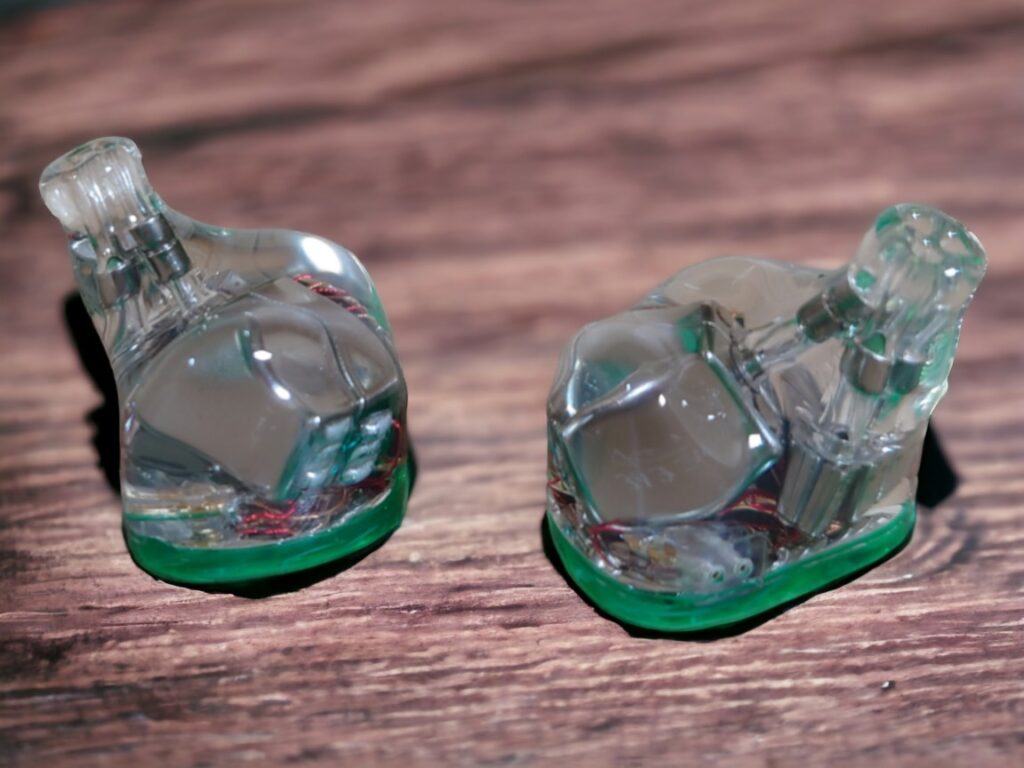
KIWI EARS ORCHESTRA LITE SPECIFICATIONS
- Drivers: Kiwi Ears Customized HI*2+Kiwi Ears Customized MID*4+Knowles LOW*2
- Impedance: 18 ohms
- Sensitivity: 112dB
- Included cable: 1.2 m Detachable 4-core 7N Oxygen-Free Copper OFC Cable,
- Cable plug type amp: 3.5mm
- Cable plug IEM: Detachable 0.78mm 2 Pin
- Tips: Silicon type, 3 sizes
- Carry pouch included
BUILD AND COMFORT
The housing is 3D printed medical grade resin. The Orchestra Lite feels and looks very sturdy. They are a bit on the bigger side, but are quite light.
There are 2-pin cable connectors, which I prefer to MMCX, and the cable is very nice. The compact travel case is simple and functional. The tips are totally OK, but I always use my own. Tips and fit is a very individual thing.
It’s always important to get a good seal, but I find the Orchestra Lite even more picky on the seal than most. This will probably vary from person to person, though, so don’t put too much weight on it, just be extra aware if you are unsatisfied with the sound. Maybe you need to try some other IEM tips. Maybe you just need to ensure a proper fit. My favourite trick is to gently pull my ear back to open the ear canal when inserting the IEM.
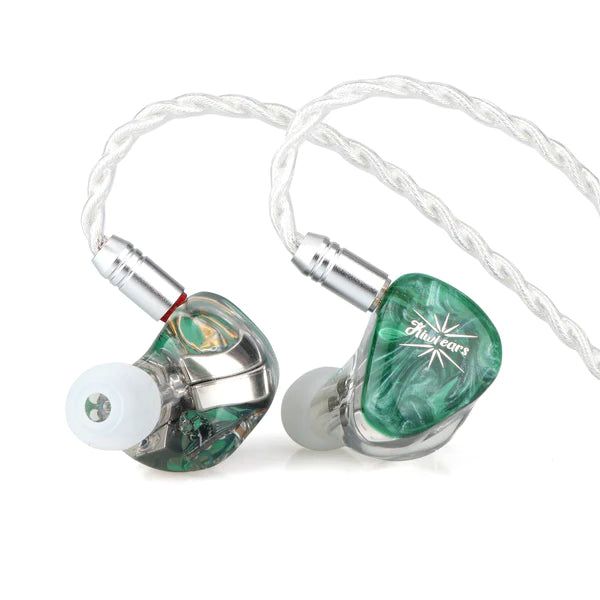
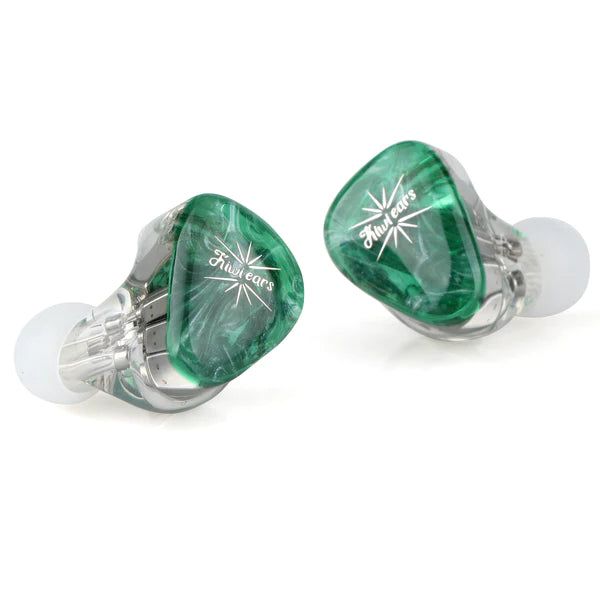
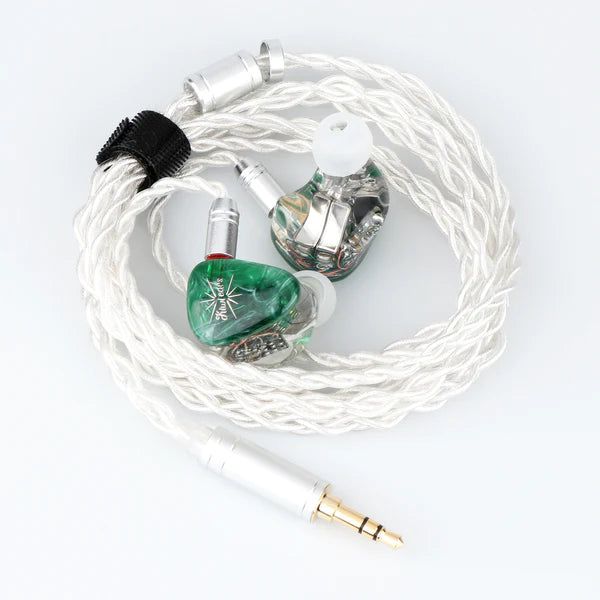
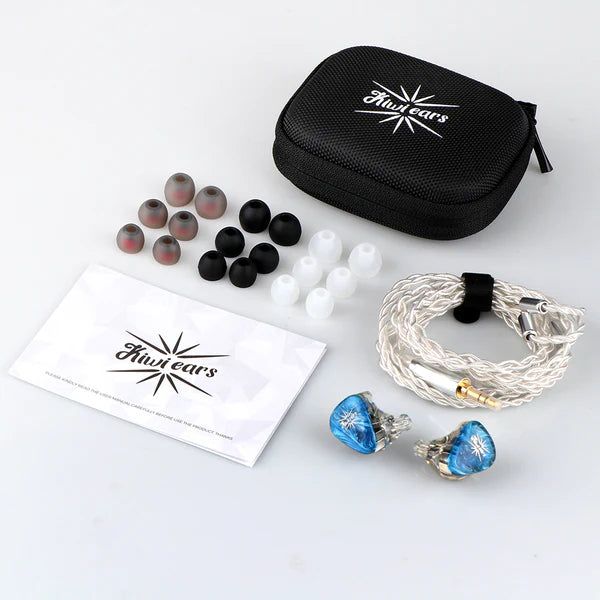
LISTENING IMPRESSIONS
I used the neutral-sounding Topping A90 desktop amp for this session, using the RME ADI-2 DAC FS as a source.
Burn The Witch by Radiohead. The soundstage is pretty big with nice layering. Thom’s vocals are clear yet slightly warm.
Angel by Massive Attack. The vocals are smooth and very nice, the treble delicate. The bass is good, but not quite on the level of the fabulously kick-ass bass of the Kiwi Quintet.
The Crow by Cassandra Wilson. The vocals are wonderful. Nicely lush and warm, but not too much. The bass is full and blends in well.
As Before by Olga Konkova
The cajôn drum lacks a little bit of mid-bass punch compared to most IEMs. The rest is crystal clear and delicately rendered, especially the female vocals.
Brothers by Adam Baldych. The saxophone is very smooth and sounds delicious. The violin, the piano, the percussion – the whole presentation is tender and smooth.
Carretera by David Brito / Julie Fahrer. The female vocals are really beautiful. They’re delicious. Clear and smooth. The strings too. The percussion is snappy but quite ethereal sounding. The treble is smooth and more liquid rather than crisp.
If I Were a Fish by Mùm. Very nice and organic-sounding presentation. I like the liquid-sounding treble and the smooth vocals. The soundstage is quite wide and open-sounding. The bass drum samples that kick in at 2:50 sound very nice.
Haydn Cello Concertos III by Freiburger Barockorchester. The strings have a very organic and natural sound. They’re full of nuance, there’s a great sense of flow and ease. They feel rather smooth, not aggressive and raw but still with lots of detail and speed.
Floratone by Floratone. The bass is rich and powerful. It’s not bloated, but ever so slightly bloomy – like it should be on this track. The rest of the spectrum is natural and organic sounding. The general presentation is very nice and well-balanced.
Man In The Box by Alice in Chains. Sounds great. The bass is well-defined and balanced. Vocals are rich and smooth. The percussion is precise. It’s a smooth performance, not very aggressive.
WRAPPING IT UP
Sound Signature, Soundstage and Imaging: The soundstage is pretty open, tall and wide, but lacks depth, as most IEMs in my experience. Layering is good. The sound signature is what I’d call neutral. Neither bassy nor bright, not especially mid-centric either. Well balanced.
Treble: The treble is very nice, it’s crisp and smooth and liquid at the same time. It’s never harsh. There’s lots of detail and nuance. It’s not recessed and not too dominating. There’s no issue with transients and sibilance, still it’s bright and clear.
Midrange: The mid-range is what takes center stage with the Orchestra Lite. It’s pronounced, sweet, delicate and slightly lush. Much like the treble, the mids are a bit round in the edges and very pleasing to the ear. It’s almost perfect, but if I was to be really picky, I personally wouldn’t mind a bit more low-mids energy, adding some extra warmth.
Bass: The bass is good, but leaner than most IEMs. The Orchestra Lite isn’t by any means bassy. It’s tight without sounding dry. Not at any point does it sound bloated or bleed into the mids.
Dynamics and detail: The Orchestra Lite has got the dynamics to really slam. However, I find it has its strength in refined smoothness and its natural-sounding presentation rather than exaggerated dynamics. The detail level is high, and there’s lots of resolution, but the details aren’t necessarily pushed in your face.
COMPARISONS
I’ll write a separate comparison and link it here. The amp used was Topping A90, and the source was RME ADI-2 DAC FS.
IKKO OH10 OBSIDIAN vs ORCHESTRA LITE
The OH10 has a more V-shaped sound profile. There’s more focus on the bass and highs. With the Orchestra Lite, the mid-range gets more attention. I find the OH10 to sound more dynamic and fun, the Orchestra Lite is more neutrally tuned and more even across the frequency spectrum.
The treble is clear and relatively crisp on both. The mids are smooth, but more recessed with the OH10. The bass is good on both, but more elevated with the OH10. The soundstage feels bigger with the Orchestra Lite, while instrument separation and imaging are a little better with the OH10.
I really like both of these IEMs. They are different. For a neutral and relatively smooth sound with a wider soundstage, the Orchestra Lite is the better choice. For a more “fun” tuning with more bass and better imaging, the OH10 is great.
SENNHEISER IE200 vs ORCHESTRA LITE
In terms of sound signature, the Orchestra Lite is crisper and brighter, and the IE200 is darker and lusher. The soundstage is bigger with the Orchestra Lite. It is generally also more dynamic and detailed.
The treble is clearer and more articulate with the Orchestra Lite, it’s smoother with the IE200. The mid-range is warmer, thicker and sweeter with the IE200, whilst it’s clearer and a little brighter with the Orchestra Lite. The bass has more quantity with the IE200, while it’s tighter with the Orchestra Lite.
Both sound natural and organic, with a nice timbre. All in all, the Orchestra Lite is more neutral and technically precise, but the IE200 has some extra smoothness and warmth. These are both great IEMs, albeit with a different character.
MOONDROP KATO vs ORCHESTRA LITE
In terms of sound signature, the Kato is a bit V-shaped with a strimmer emphasis on the treble and the bass, whilst the Orchestra Lite is more neutral and lets the mid-range take more space.
The soundstage is very wide with the Orchestra Lite, and the Kato slightly more intimate. Imaging is similarly good with both.
The treble is quite pronounced with both. The mid-range, however, is more different. The Orchestra Lite sounds brighter and has more energy in the upper mids. The Kato is a bit warmer and lusher.
The bass is definitely more prominent with the Kato. It has more energy and slam. Sometimes it’s too much, sometimes the Orchestra Lite is a little lean.
When it comes to detail, the Orchestra Lite tends to deliver more of it across the frequency spectrum. It is more articulate and has better microdynamics. It’s got better macrodynamics too, with the exception of the bass.
FIIO FH5S vs ORCHESTRA LITE
The Orchestra Lite and FH5S are not very dissimilar. They’re neutrally tuned, but present the music a bit differently. The FH5S has a dry warmth to its sound and excels in areas such as dynamics, texture, imaging and instrument separation. The Orchestra Lite is not far behind in these aspects but has a more fluid, rounded presentation that’s very appealing.
The FH5S does have a trick up its sleeve with the possibility to adjust bass, mids and treble, but this doesn’t change the nature of the presentation. However, since the FH5S has a bit more bass to begin with, one could rather wish for a bass boost switch on the Orchestra Lite, than on the FH5S.
KIWI EARS QUARTET vs ORCHESTRA LITE
The Quartet stands out for its remarkable bass. It’s significantly higher in quantity, especially deep down compared to the Orchestra Lite, which has a rather linear bass response. On some tracks this will be really noticeable, on other tracks it won’t. You can, however, use the dip switch to adjust down the bass on the Quartet.
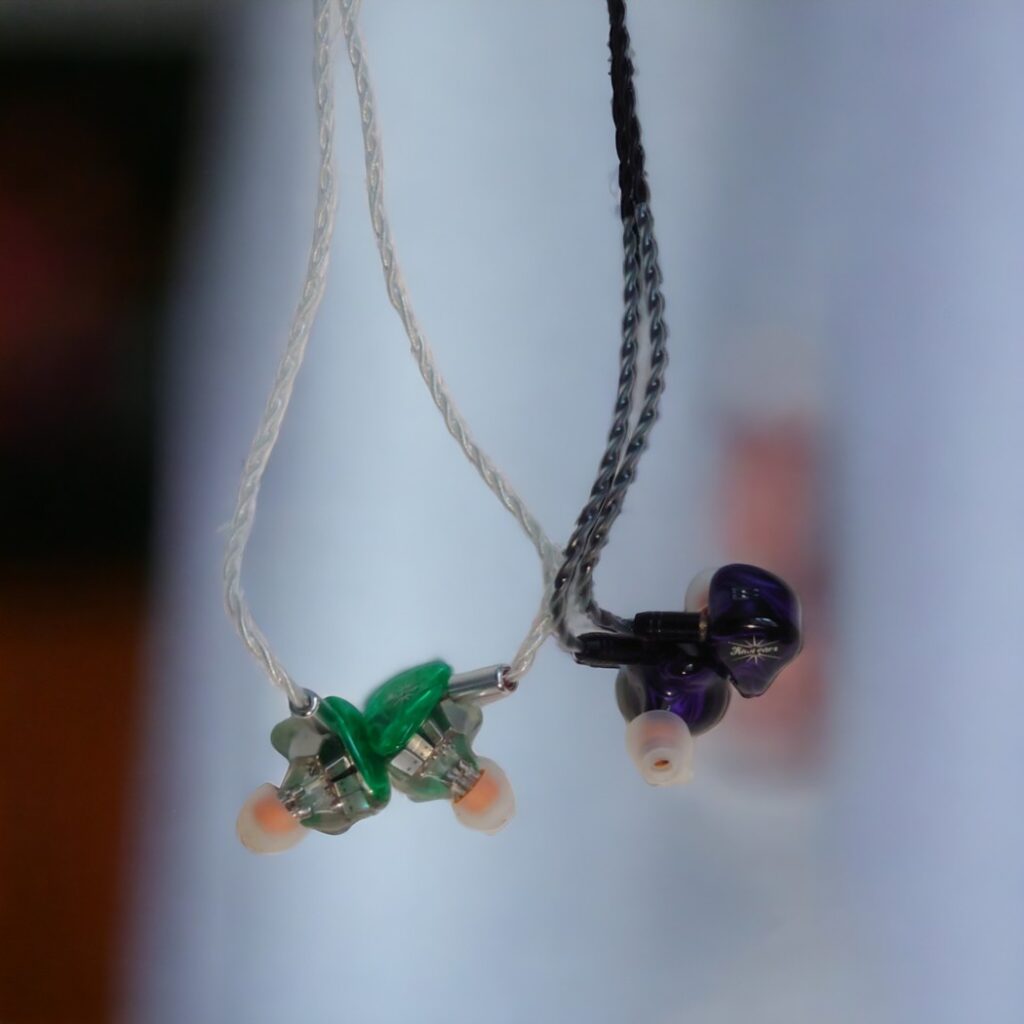
The Quartet also has a warmer tonality with a smooth midrange, but still quite an energetic treble. The Orchestra Lite is clearer and presents the music with more air, detail and subtle nuance. The Orchestra Lite has a more open soundstage. As opposed to the Quartet, which is rather coloured, it has a neutral and balanced sound profile. It still has a sense of delicate smoothness to its presentation, even though the Quartet is smoother, though at the cost of detail and clarity.
KIWI EARS QUINTET vs ORCHESTRA LITE
The Quintet is relatively speaking a little more bright, crisp and punchy. The Orchestra Lite, in comparison, is a bit smoother, more laid back and lush. They have similar soundstage and imaging although the Quintet feels a bit airier.
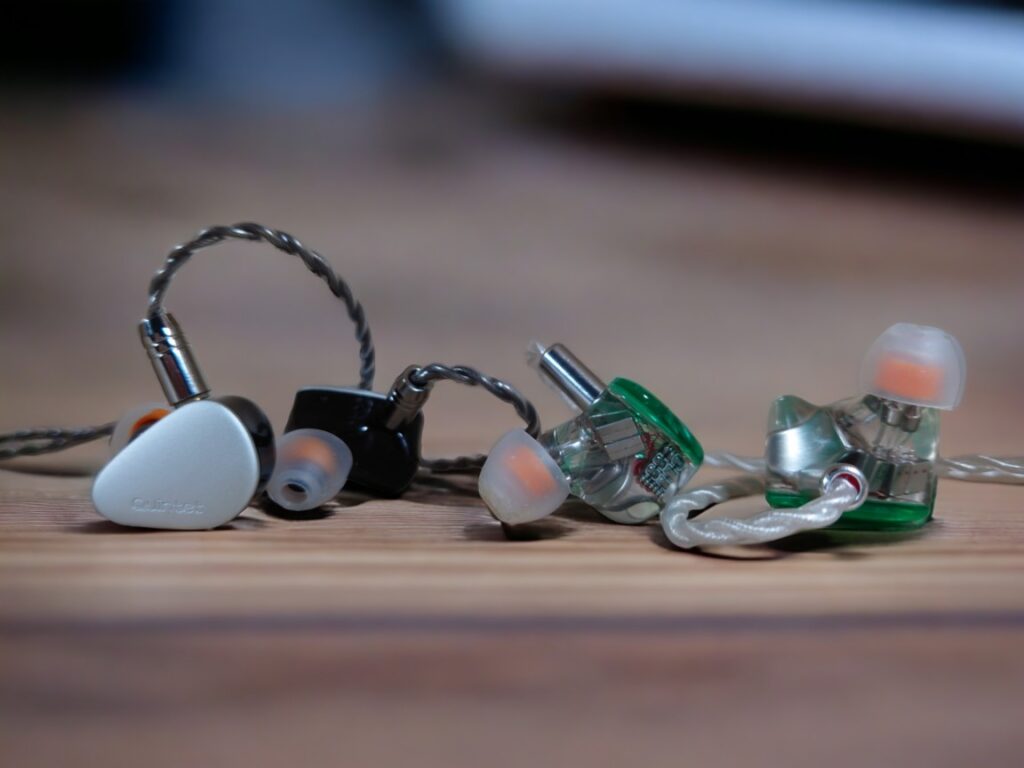
The treble of the Orchestra Lite feels smoother yet still very present. The Quintet is a little bit more sparkly and even more detailed.
With regards to the midrange, the Quintet is a bit more energetic and upfront, with more obvious texture. In direct comparison, the Orchestra Lite is smoother, a little bit lusher and more organic sounding.
When it comes to the bass, the Orchestra Lite is tight, feels well balanced and never becomes boomy. However, as good as the Orchestra Lite is, the Quintet has a fantastic bass. It’s tactile, very dynamic and highly detailed with lots of texture in a way the Orchestra Lite, and few others, can match.
In summary, the Kiwi Ears Quintet and Orchestra Lite are both great-sounding IEMs. Both are quite neutral sounding, they both have lots of detail, an open soundstage and a quite neutral and well-balanced sound profile where no part of the frequency spectrum feels exaggerated or recessed. I find the Quintet to sound a bit brighter, but not much. It also has a slightly stronger bass.
AMPLIFICATION
Desktop
I have used the very neutral-sounding Topping A90 for most of my listening. It has plenty of power to drive the Orchestra Lite. Being a fan of warmer sound, I do find it even more enjoyable with slightly warmer-sounding amps, like the Rebel Amp or the Fiio K5. Also, the Schiit Magni Heretic and the amp on the RME ADI-2 DAC FS sound great.
Portable
The Orchestra Lite sounds very good from the headphone output (3.5mm jack) of my phone, the Poco F5. Volume level is typically at a moderate 60%. With the THX Onyx dongle, the sound gets a bit tighter and I have to adjust the volume because it has more power. The Xduoo Link 2 also sounds good. Going back to the desktop setup, however, there is no doubt that it sounds better than my portable options. The Orchestra Lite sounds good from modest sources but scales well.
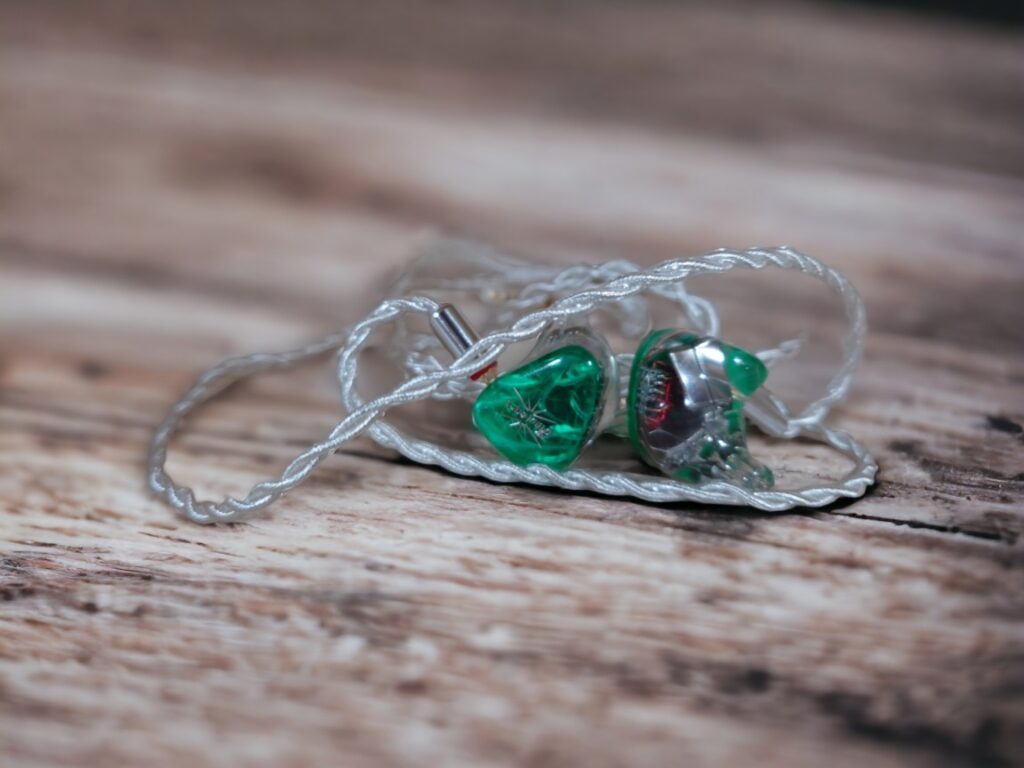
CONCLUSION
The Orchestra Lite reminds me strongly of the Sennheiser HD600 over-ear headphones. For more than a decade it’s been the reference headphone when it comes to neutrality and a natural timbre, especially in the midrange.
The Orchestra Lite is an IEM aiming for neutrality. It succeeds in that without becoming analytical, without sounding flat and unengaging. It is highly detailed but retains a sense of smoothness and has a nice, natural sounding timbre. Unlike many of the IEMs on the market that have an unnaturally boosted bass and treble, the Orchestra Lite lets the midrange shine.
The Orchestra Lite brings you closer to the recording and it does so in an excellent way.
Buy on Linsoul: Kiwi Orchestra Lite
Buy on Amazon: Kiwi Orchestra Lite
Any purchase you make on Amazon or Linsoul with any of our affiliate links will give us a small provision at no cost to you.
We only get a provision for items that are not returned, so there’s no incentive for us to recommend something that’s not good.
Linsoul : Headphones, Earbuds, Wireless Earbuds, Desktop DAC/AMP, Portable DAC/AMP, Digital Audio Players,
Amazon: Headphones, IEMs, Headphone Amplifiers, Home Audio or Anything else.
.
If you enjoyed this article or other content on The Headphoneer, you might consider leaving a small donation to keep this website up and running. No donation is too small. Thanks for supporting us!
If you like our work please follow us on Instagram, Facebook and Twitter , it will help us grow. Sharing is caring 🙂


